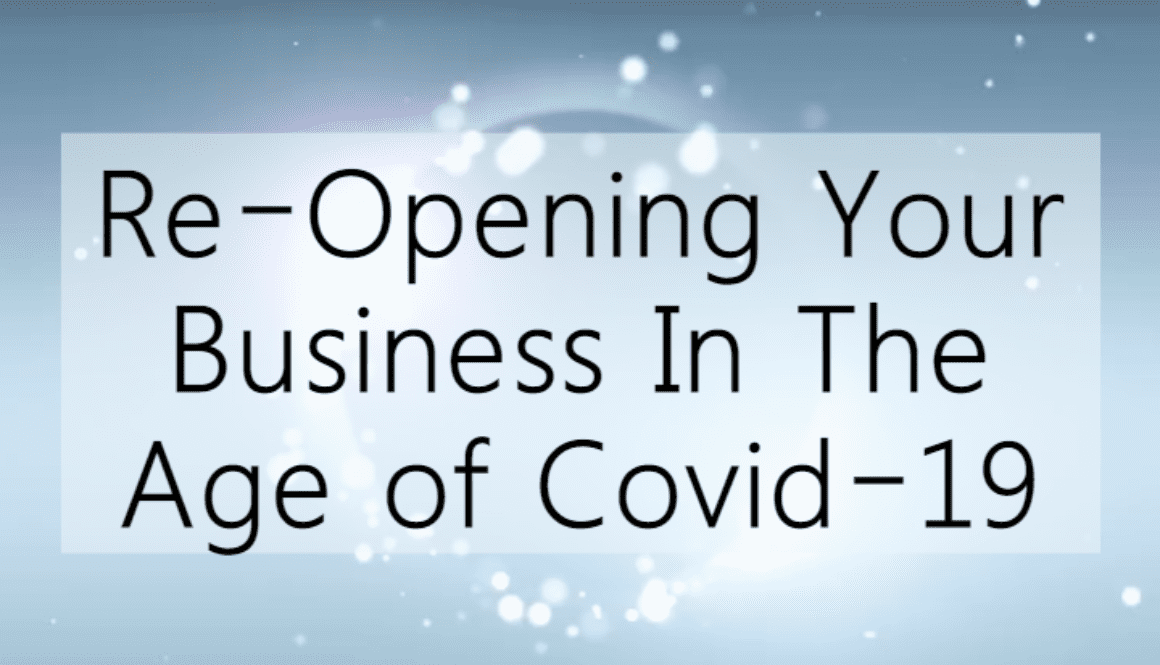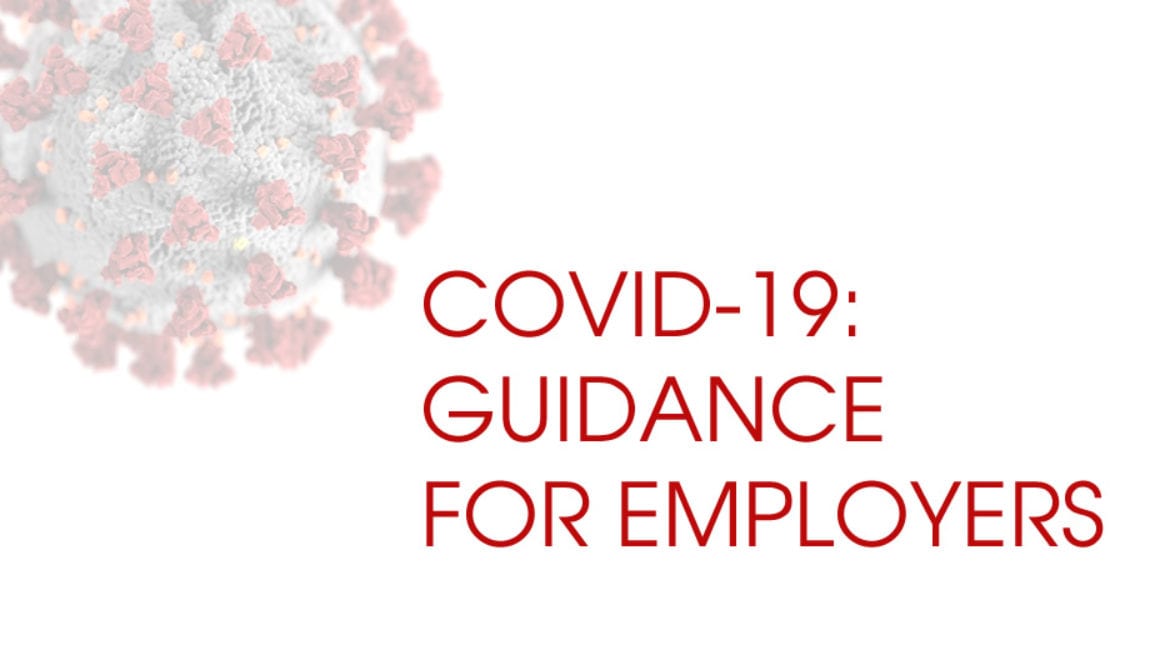On April 16th, President Donald Trump, with the input of public health experts, announced guidelines for “Opening Up America Again,” a non-binding, three-phased approach to end the country’s various stay-at-home orders. At the outset, the plan lays out set criteria that governors and local officials should satisfy before opening up their state or municipality. Many state and local officials have already been taking steps to allow businesses and public access areas to reopen, while following best practices to continue minimizing the spread of Covid-19. So, what does this mean for your business? Are you prepared with an action plan to reopen while keeping your employees safe and healthy?
Best Practices for Keeping Everyone Healthy
Of course, the number one priority when considering how to resume business operations is the health and safety of your workforce. The CDC has released a guideline for employers outlining best practices for reopening. Recommended actions include creating a cleaning and disinfecting plan or intensifying the current plan, promoting healthy hygiene practices, and implementing safeguards for ongoing monitoring of employees. In following the guidelines provided by health officials, businesses and employees will greatly reduce their chances of catching or spreading the coronavirus upon resuming operations.
The Cleaning and Disinfecting Plan
Before welcoming your staff back with open arms, you should create and implement a stringent cleaning and disinfecting plan for your facility. The plan should cover, WHAT, HOW, and WHO. What needs to be cleaned? How are we going to clean? Who is going to be cleaning? Answering these questions while drafting the cleaning routine will help ensure you have a detailed plan ready to combat Covid-19 in your workplace.
What needs to be cleaned? Look around your workspace and facility. Make a note of the areas which are frequently used and highly trafficked. Entrances, lobbies, restrooms, and breakrooms are typically the most traveled areas in any office and will require the most time spent in cleaning and disinfecting. The CDC advises that areas unoccupied for 7 or more days should be routinely cleaned. This means that the focus of your cleaning and disinfecting plan should be on those areas that are occupied within the previous 7 days, as well as surfaces that are frequently touched. You should also maintain your current cleaning procedures for outdoor areas, given that sunlight and warmer temperatures may be deadlier on the virus.
How are we to clean and disinfect these areas and items? Now that you know the areas to focus on, how to clean those areas depends on the surfaces within. According to the CDC, non-porous, hard surfaces can be disinfected with most common EPA-registered household disinfectants. For fabrics and other materials, check the care label and follow manufacturer cleaning instructions.
Along with the cleansers and disinfectants, it’s important to provide the cleaning staff with the items they will need to tackle the situation. Be sure to stock up on cleaning solutions, labeled spray bottles, wipes, paper towels, rags, and any other supplies needed. Employers should provide their cleaning staff with Personal Protective Equipment (PPE), both to safeguard them from potential infection and against the harsh cleaning agents. Be sure to read the labels of the solutions and disinfectants to ensure the PPE is appropriate for the product being used. You may need to take it a step further and provide training on how to use the cleaning supplies and PPE. Always be sure to follow OSHA guidelines for any cleaning supplies you provide.
The cleaning plan is coming together nicely. Time for the final step.
Who is going to be cleaning? Depending on your business, this might be the hardest part of the plan to map out. If you already have a dedicated cleaning and maintenance team, perfect! You can move on to how to prepare them to implement the plan. But if you’re like many businesses, you may not have thought of this. If that’s the case, you’ll want to consider the pros and cons of hiring an outside company, hiring part-time cleaning staff, or rearranging roles within the company. What you choose will depend on your individual business model and current company situation.
Your cleaning plan is complete and it’s time to start implementing. As employees begin coming back to the office and you see areas of frequent use or maybe parts of the plan that need tweaking, revise the plan as necessary. Some areas might need more frequent cleaning, or maybe a new disinfectant is necessary due to product availability. Keep an eye out for how your cleaning practices are working or not working, and make changes as needed.
Promoting Healthy Hygiene Practices
Before opening your doors again, you will want to consider the protocols to implement among the staff to keep contact and the spread of germs to a minimum. Aside from the cleaning plan, think about ways to continue to encourage social distancing. Can workspaces be rearranged to provide for a minimum of 6-feet of distance between individuals? Is teleworking still feasible for some to allow for fewer individuals in the facility at once? Might there be a way to arrange the return to work in shifts or phases? It might be helpful to choose to close off certain areas where employees congregate. Employees can be encouraged to use video conferencing for any meetings, thus allowing you to close the meeting rooms. Indoor breakrooms could have their seating removed and employees encouraged to take their breaks outside. This can also cut back on the time spent cleaning each of these areas.
It’s also helpful to keep in mind any employees who have recently traveled. A two-week quarantine period where the employee remains at home upon return could go a long way in preventing any possible transmission. Similarly, if you usually allow clients or visitors from out of the country, out of the state, or even just from a different county, what policies can be put in place to minimize risk?
When employees begin to return, distribute information on why they are seeing all these changes around the office. Encourage them to come up with ideas on how they think their workspace can become more “distance friendly.” Remind them to follow proper hygiene by coughing and sneezing into their elbows or tissues, wash their hands frequently, and avoid coming to work if they are having symptoms. Explaining why these policies are in place can have the positive impact of getting everyone on board and becoming more diligent about their health and wellness, as well as those around them.
Implementing Ongoing Safeguards
Ongoing safeguards for monitoring employees’ health are recommended as a defense against allowing the virus to take hold in your workplace. The White House recommends developing policies for lawfully checking employees’ temperatures, disallowing employees or vendors to enter the building if they are exhibiting symptoms until cleared by a health provider, and what to do if an employee does test positive for Covid-19. But because around 25% of Covid-19 positive cases show no symptoms, according to the World Health Organization, the screening is not a sure-fire way to prevent illnesses among your workforce. This screening needs to go hand in hand with other policies and procedures to be most effective.
When creating and implementing these policies, it’s important to keep in mind any local or state laws governing employee privacy and protections.
Opening Your Doors
Congratulations! Now your business can invite employees back in. Naturally, some will be anxious about integrating back into the public world. Depending on how widespread the disease was in your community, employees can be downright frightened to return. By coming up with a written down plan on cleaning and disinfecting, practicing proper hygiene, and implementing ongoing safety checks, you can help alleviate some of these fears.
Make sure employees are informed of the steps your business is taking to protect their well-being and that of the community. Take their fears and hesitation into consideration when creating and updating the policies. Employee concerns should always be taken seriously and investigated, and there should never be fear of retaliation for any concerns brought forward. Employee safety and well-being is the number one goal in all of these plans and policies.
By taking some time to think about the different facets of ensuring employee and community safety, you have already begun to take positive steps forward in returning your community and business to normal operation.
As always, please feel free to contact People Person if you need guidance on any of the plan steps above. We can help you understand any relevant laws and regulations for your jurisdiction, and assist in implementing a plan that works for you.




